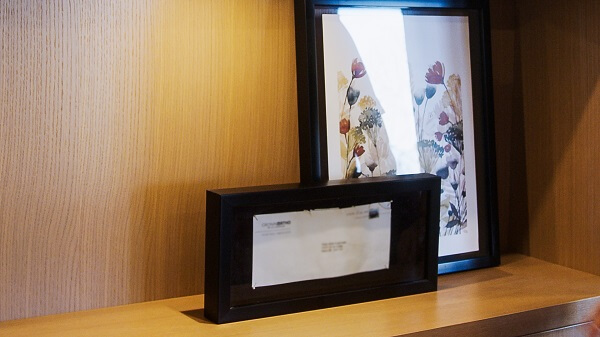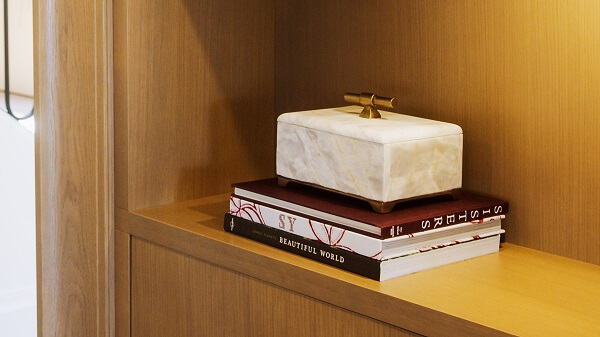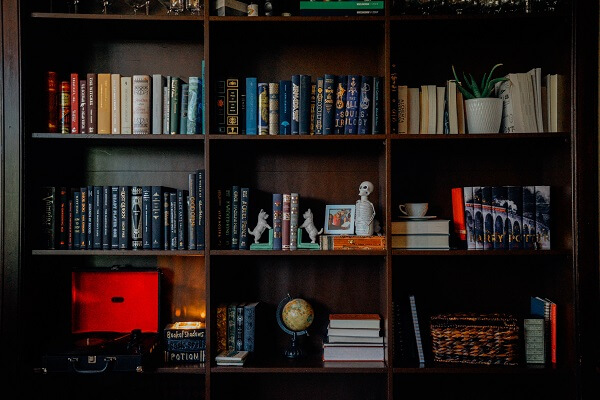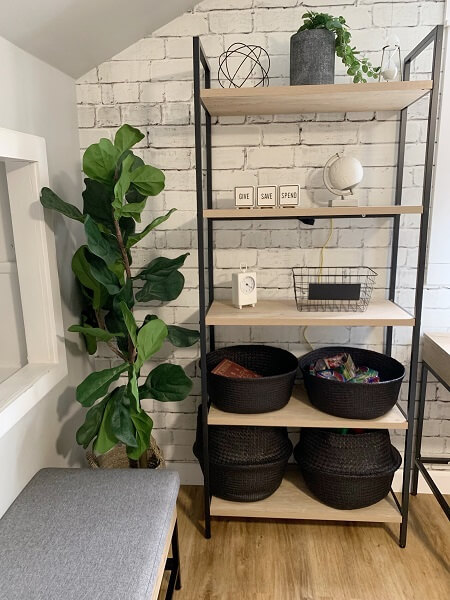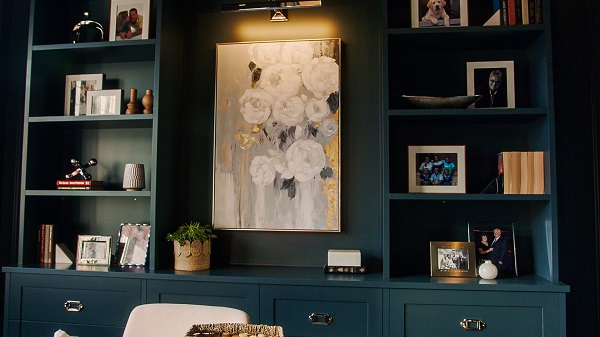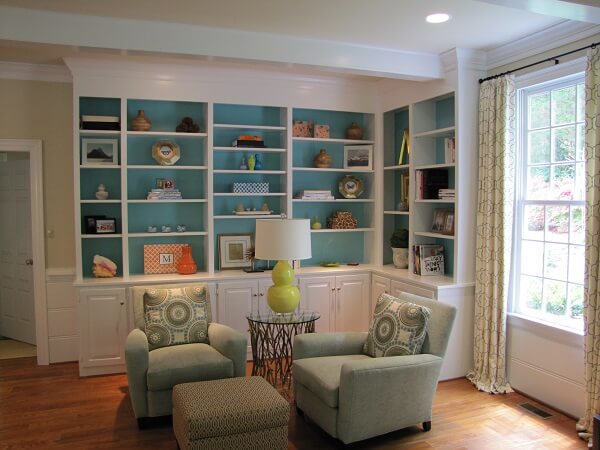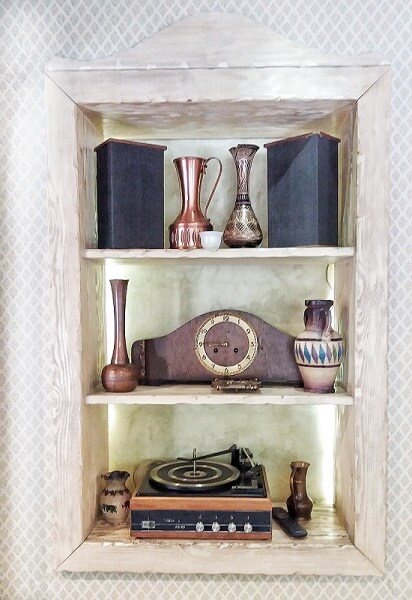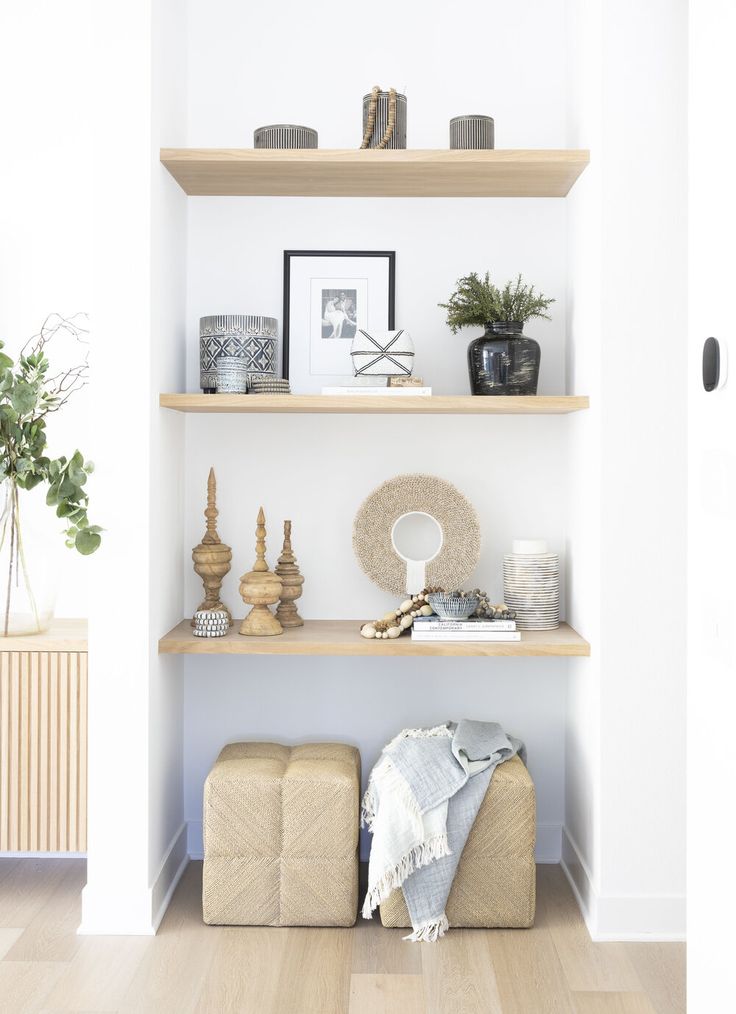It’s a question that plagues every aspiring DIY interior designer at some point:
“How can I make my shelves look nice?”
Sure, shelves are designed to hold and organize stuff, but they also happen to be large and attention-grabbing. Because of that, shelves are an important facet of the interior design process.
Rather than using them as a dumping ground for assorted knickknacks, take a calculated approach to styling your shelves. Rather than tossing things on with no thought, think about how you can arrange your shelves for peak aesthetic appeal.
That doesn’t mean you can’t still use the shelves for storage; it just means you need to follow a few shelf décor rules.
Here’s our guide to decorating your shelves:
Before you start
There are just a few things to consider before you get started with styling your shelves.
Is it a decorative shelf or a bookshelf?
A lot of shelf styling focuses on unique pieces of artwork, photographs, figurines, or other decorative items.
But what about people who just want bookshelf ideas that involve storing… well, books?
Just because you prefer to use your shelves for book storage doesn’t mean they can’t look nice! Most of the tips in this article are aimed at decorative shelves, but they still apply to bookshelf décor—it just means a lot more of the items you use will be books.
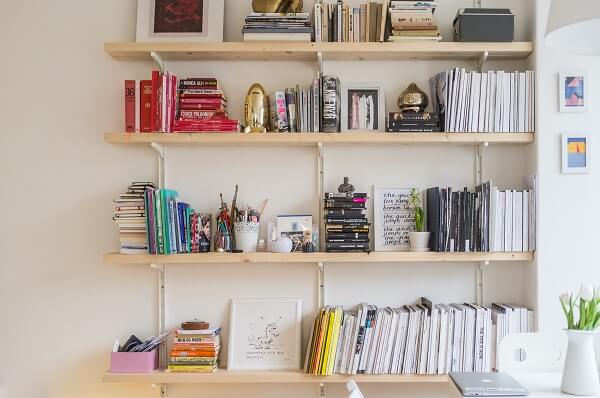
Consider the size and shape of your shelves
The type of shelves you’re decorating will have a big effect on how you lay out your decorations.
Wide, tall shelves with lots of open space are more challenging to style than small shelves. The extra room makes it tempting to pile more stuff onto the shelves, but all that does is make them look cluttered.
To style large shelves, you’ll need at least a few sizable items with some visual weight. Visual weight refers to how starkly the piece stands out when you step back and look at the whole shelf. For example, the glass vases in the photo below are quite large, but have very little visual weight because they’re transparent.
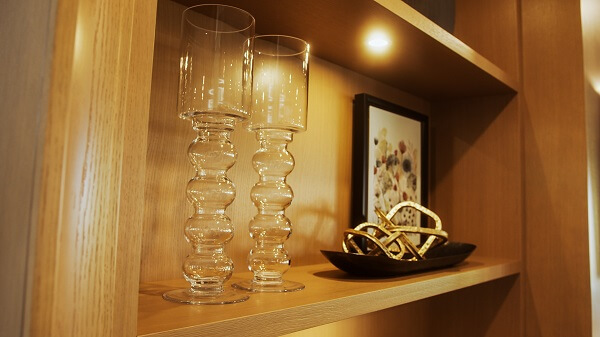
You can certainly still put small items on big shelves, but you’ll have to be more strategic about grouping them—more on that a bit further down.
If you’re planning to display a lot of photos, try narrow, short shelves. Photographs tend to get lost on a wide-open shelf without a little strategic layering.
But don’t worry; we’ll talk about layering too.
Lay out all your items
Before you start coming up with your shelf décor ideas, it’s helpful to take everything you want to display and lay it all out on the floor. This way, you can get a sense of how much you have, and start trying to sort things by size, colour, or texture.
As you’ll see when we get into the main part of shelf decorating, the size and style of your items is a big part of where you’ll place them on the shelf.
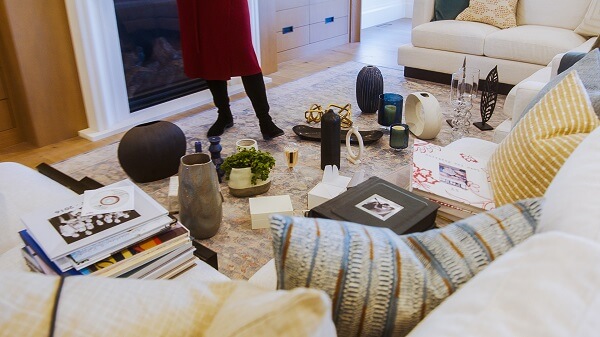
Now, on to the main event:
Shelf decorating tips
There aren’t many unbreakable rules for decorating shelves.
Instead, here are 12 tips you can use while you’re styling the shelves in your home. You don’t have to follow all of them, but they’ll help point you in the right direction.
1. Start with the largest items
You’ve laid out all the items you want to display on your shelf. How to begin?
Start by finding a place for your largest items, the ones with the most visual weight.
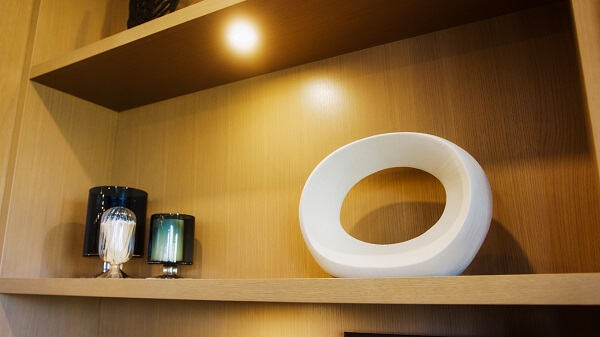
Once you’ve placed for your most prominent items, set smaller and smaller stuff until everything is in its spot.
But how do you decide what goes where?
2. Keep things balanced
Your shelf décor should be visually balanced.
The items you’re displaying probably come in a wide variety of sizes, colours, shapes, and textures. Try to place them so that similar items aren’t cluttered together on one side of the shelf.
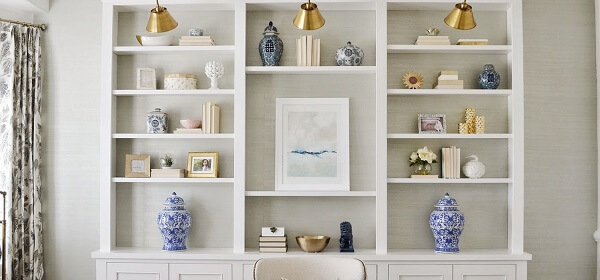
Source
Take your largest items and spread them out evenly across your shelves, both horizontally and vertically. That doesn’t mean everything has to be perfectly symmetrical! It just means that any large items on one side should be balanced by large items on the other.
If it helps, you can imagine arranging items of roughly similar size, colour, or style in zigzag patterns:
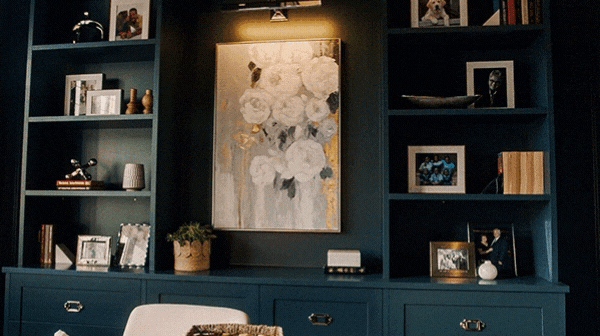
You should also balance your colours and textures this way.
3. Keep your shelves grounded
The one exception to the balance guideline would be to keep your shelf’s appearance grounded by placing the heaviest or largest items at the bottom.
Baskets or boxes, or rows of your thickest books are all candidates for the bottom shelf. In the case of boxes or baskets, they’re easier to access for storage purposes—a nice bonus.
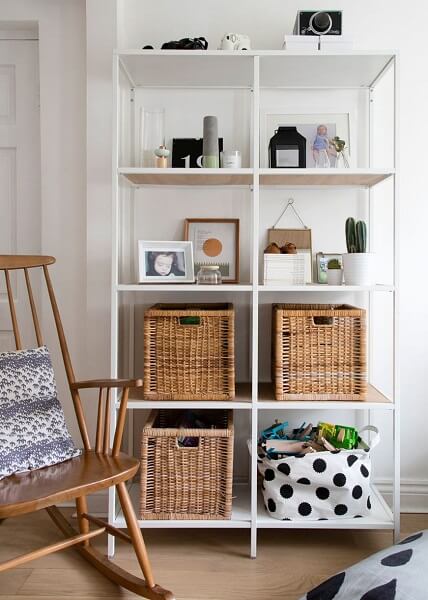
Source
4. Think in cubes
As you’re styling your shelves, divide them into an imaginary grid of equally sized cubes.
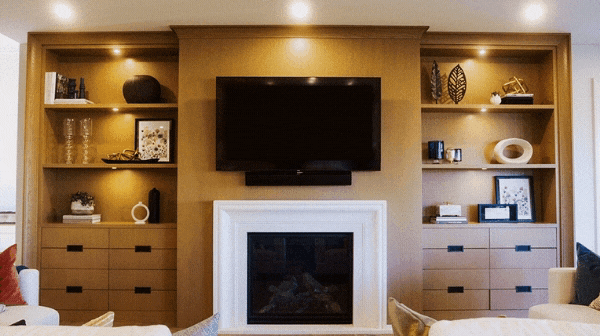
Arrange your decorations inside each imaginary cube. You can place more than one item inside each cube, but the items inside each cube should form their own little vignette.
Using the grid approach makes it much easier to keep your shelf décor balanced and organized.
5. Arrange decorations in layers
When you’re arranging several items together within one of your imaginary cubes, layer them strategically to create visual depth.
For example, a tall photograph with two shorter photographs in front often looks better than three photographs placed side by side.
You can use that approach with almost any set of objects: big in the back, smaller in the front, or a long item behind several short items.
